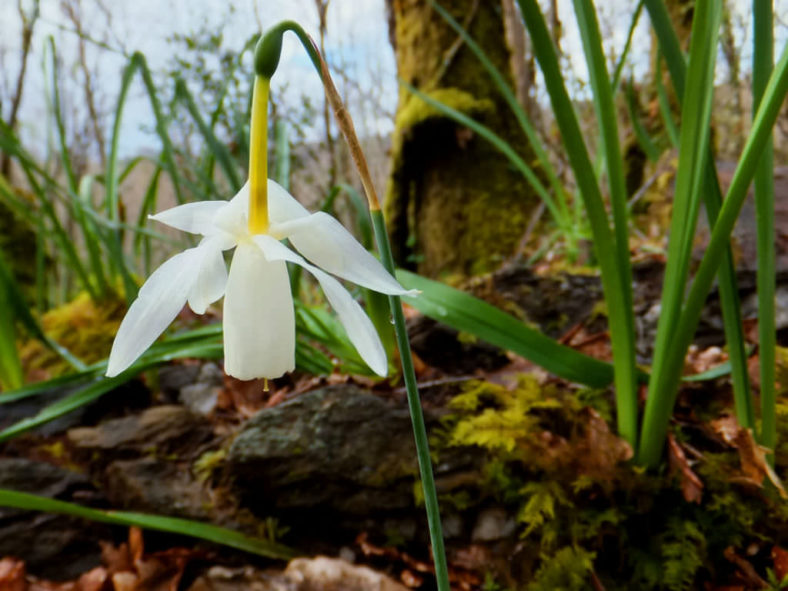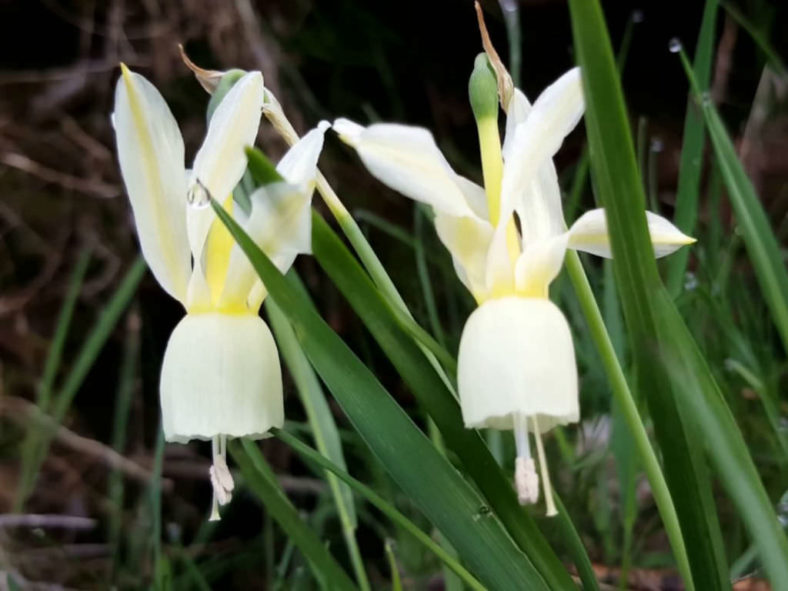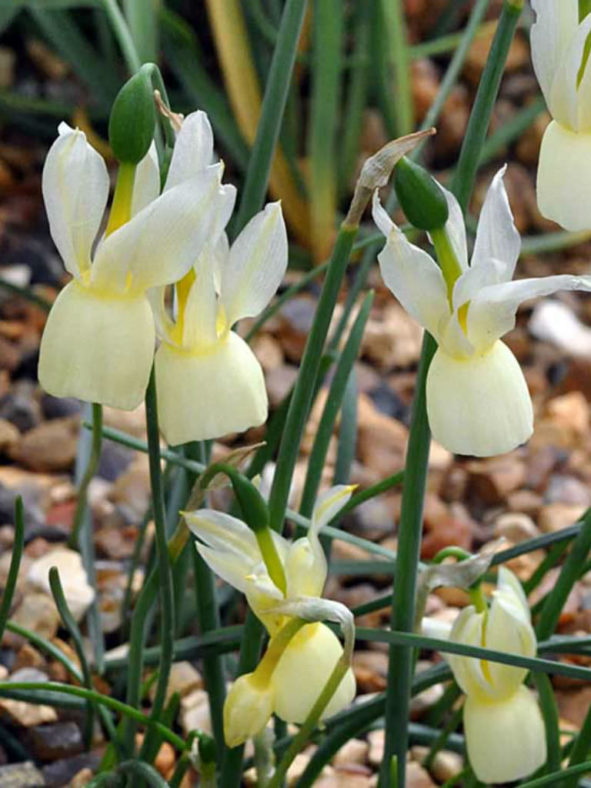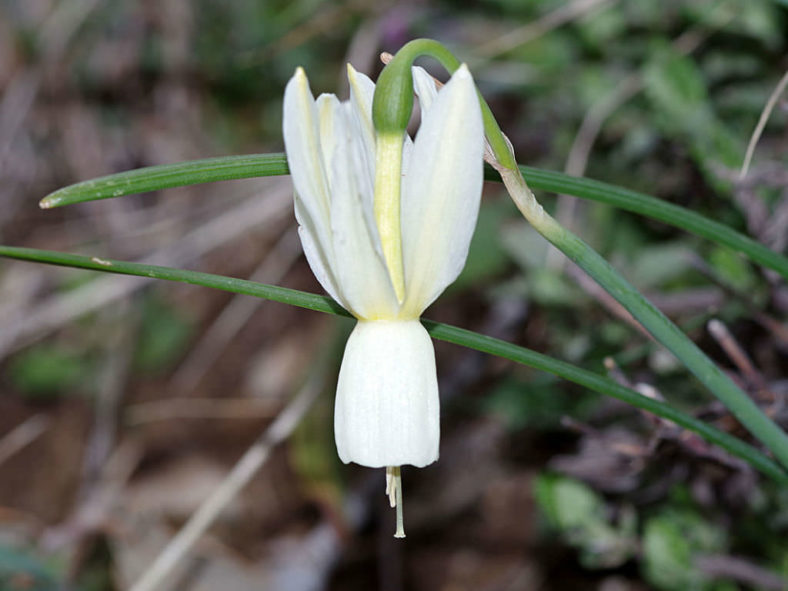Scientific Name
Narcissus triandrus L.
Common Name(s)
Angel's Tears
Synonym(s)
Ganymedes effusus, Ganymedes triandrus, Illus triandrus, Narcissus pyrenaicus, Queltia triandra
Scientific Classification
Family: Amaryllidaceae
Subfamily: Amaryllidoideae
Tribe: Narcisseae
Genus: Narcissus
Origin
Narcissus triandrus is native to France, Spain, and Portugal.
Flower
Color: Pale creamy-yellow
Bloom Time: Mid-spring
Description
Narcissus triandrus is a dwarf bulbous perennial with up to 6 nodding pale creamy-yellow flowers. The leaves are narrow and dark green.
The flowers are fragrant, up to 2.4 inches (6 cm) wide, with reflexed perianth segments, and appear on up to 12 inches (30 cm) tall stems in mid-spring.

Hardiness
USDA Hardiness Zones 4a to 9b: from −30 °F (−34.4 °C) to 30 °F (−1.1 °C).
How to Grow and Care
Place them in bright light as on an east or south windowsill for established plants. Bulbs that have not sprouted should be kept away from direct sunlight until new growth emerges and the plants are established.
Many people start Narcissus from bulbs. First, plant the bulbs in moist potting media with the pointed end facing up if you're doing this. Keep the soil continuously moist but not soaking. They can also be grown directly in stones or gravel by suspending or anchoring the bulbs in the substrate and adding just enough water to reach the bulb's base. In all cases, it's crucial to avoid letting the bulb's body become saturated or sit in water–it will quickly rot. Depending on the temperature, new growth should emerge within a few days to a few weeks after planting. The bloom should follow in 4-6 weeks.
Bulbs can be planted in regular potting soil or pebbles, or clay. The key is to keep the balance of moisture right: they should have constant moisture but never be soaked. See more at How to Grow and Care for Narcissus.
Subspecies
Links
- Back to genus Narcissus
- Plantpedia: Browse flowering plants by Scientific Name, Common Name, Genus, Family, USDA Hardiness Zone, or Origin
Photo Gallery
Click on a photo to see a larger version.




